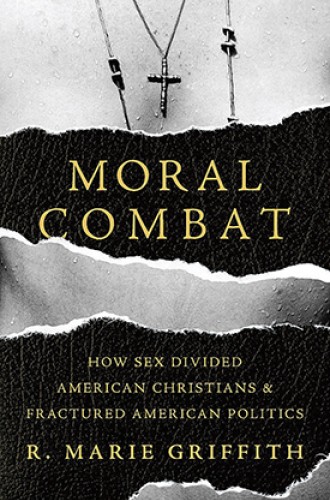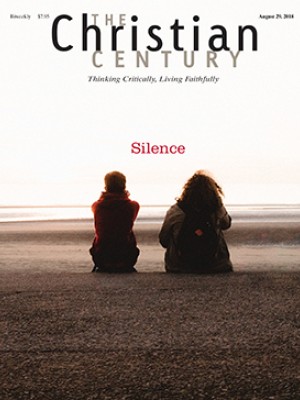What we talk about when we talk about sex
The intersection of race and sexuality is the ur-story of American culture.
Marie Griffith notes a strange tic in American culture: whenever anything extraordinarily bad happens, conservative preachers of various stripes come out of the woodwork to blame sexual immorality as the root cause. Terrorist attack? Sexual depravity. Natural disaster? Sexual depravity. Mass shooting? Sexual depravity. All collective experiences of disaster and suffering are caused by—or are signs of God’s displeasure with—Americans’ sexual behavior, particularly homosexuality, abortion, and sex outside of marriage. At least some portion of the country finds this type of explanation compelling. Another portion finds it ridiculous in the extreme.
Griffith asks: How did this happen? And what does it mean? She wants to tell the story of how a society that had a relatively uniform understanding of sex and gender became a divided nation, how Christianity became “two virtually non-overlapping religions,” and how these two different ways of interpreting culture have come to dominate current debates. She describes how each decade of the last century was shaped by a debate about sex and sexuality, from birth control in the 1920s to same-sex marriage and LGBTQ rights at the turn of the century.
Read our latest issue or browse back issues.
Griffith begins her story just after World War I, with birth control advocate Margaret Sanger. Sanger’s advocacy for birth control was both a religious claim and an antipoverty argument. She rooted the issue not only in women’s liberation but in the alleviation of women’s suffering, especially that of poor women. Sanger aligned herself with Protestant and Jewish clergy who shared the same goals. Opposition to her campaign was likewise religious. Griffith points to Christian organizations like the New England Society for the Suppression of Vice, which had long opposed contraceptive efforts, believing that they promoted sexual promiscuity.
Each chapter follows a similar structure. Griffith introduces personalities on both the right and the left who shaped public discourse over a particular issue and then gives a sense of how the debacle unfolded in the public arena. Again and again, she shows how an alliance of Protestant and Jewish clergy advocated for change and were opposed by more conservative forces. This narrative took me by surprise. We typically tell the story of sexual change in the United States as secular versus religious, but Griffith gives a compelling alternative. She tells of two religious camps, each with deeply rooted moral commitments.
This narrative is perhaps most vivid in the chapter on Roe v. Wade and the 1970s. On one side, Griffith puts Howard Moody, the Baptist pastor who supported abortion rights and founded an ecumenical group called the Clergy Consultation Service, and Frances Kissling, the president of Catholics for a Free Choice, who believed passionately that access to abortion was an issue of justice that was essential to anyone who believed in aligning with the poor. On the other side, she sets the National Council of Catholic Bishops and evangelicals like Billy James Hargis. Griffith reminds us of many forgotten aspects of the political debate before Roe v. Wade. For example, the campaign to allow access to abortion was often led by a passionate coalition of Protestants, Catholics, and Jews. This religious coalition had the broad support of the American people. Before Roe, 64 percent of Americans supported a “full liberalization of abortion laws.” This included a majority of Catholics and a majority of Republicans.
Griffith seems to have a message for more liberal Christians who frequently side with secular people on the issues of the day: Don’t back down on the moral claims you are making. Don’t cede moral ground to conservatives. These claims have a long and rich religious history, and you need to own that history.
Some aspects of the history that Griffith unfolds undermine her own argument. For example, the logic of isolating a specific issue of sexuality within each decade breaks downs in the third chapter, which is about the debate over miscegenation and interracial marriage in the 1940s. This discussion caused me to question the book’s entire structure.
The intersection of race and sexuality is not a story among others in American culture. It is the ur-story. White female identity was constructed against black female identity, as Sojourner Truth so vividly explained in the 19th century. Morality surrounding marriage in white American Christianity was constructed over and against the way that slavery shaped marriage for black Americans. Black Americans, for example, created their own marriage rites, and they could not guarantee that those bonds would be respected by slave owners, who both frequently raped women—regardless of their marital status—and separated couples for their own gain. White Americans’ talk about fidelity or women’s chastity had an implicit racial dimension. The construction of race in America more than accompanies the construction of gender and sexuality; it continually puts pressure on that story and shapes it. Griffith hints at this connection in the first chapter when she talks about the role that eugenics played in the birth control debate, but she makes it sound like a controversy among other controversies.
The intersection of race and sexuality cannot be treated simply as one chapter in a larger story. Its confinement here to a single decade makes its absence from the rest of the story all the more vivid. And even within the chapter about race, white people are the primary characters. Pitting the white supremacist Baptist preacher and senator Theodore Bilbo against the anthropologist Ruth Benedict, Griffith foregrounds a white conservative activist and a white progressive activist, using black activists as the backdrop.
This question about the role of race leads to a question that’s larger than Griffith’s text. When Americans talk about sex, are they really talking only about sex? A close reading of the debates Griffith outlines suggests that the winning side, if there are winning sides, has almost always gone to those who could cast the debate in the terms of human freedom.
Perhaps this means that sex is the context for talking about freedom—about the relationship of the individual to the social as well as the construction of relationships between women and men. But in America, the question of freedom is also always about the relationship between black and white. At the very least, many of our most contentious debates come at the juncture of sex and freedom, and race underlies these discussions in uncanny ways.
A version of this article appears in the print edition under the title “Sex, race, freedom.”







